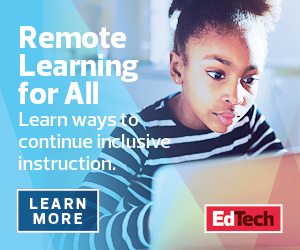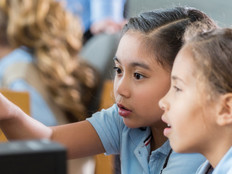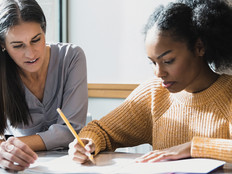Experimenting with Digital Tools Pays Off
It’s no secret that most educators believe in the power of digital learning. According to a 2020 Schoology survey of more than 16,000 teachers and administrators, 62 percent reported that digital learning is an integral part of their school or district’s teaching and learning strategy.
The survey also found that the top three digital learning priorities for teachers this school year are using digital tools for teaching and learning more efficiently, implementing a new instructional approach and collaborating with their professional learning community or other educators.
Remote learning offers educators the opportunity to work on those priorities. Today, educators across the country are finding outside-the-box ways of using technology to involve students in e-learning and have meaningful learning experiences.
For example, nearly 200 educators in Florida’s Broward County turned to the education version of Minecraft, an open-world game, to augment a range of lessons, according to The Washington Post. Teachers discovered innovative ways of using the game for student learning — from modeling geometric concepts to understanding the effects of climate change.
Digital platforms such as Google Classroom and Microsoft Teams for Education also come with a plethora of features and app integrations for educators to explore and use during remote learning. Educators have been using FlipGrid, a video discussion platform, for students to record responses to assignments instead of uploading files online. These types of apps are usually cloud-based, which means that students and teachers don’t need to install additional software to use them.
Some teachers have opted for videoconferencing tools to continue activities that require in-person collaboration, such as band or orchestra. For instance, in Missouri’s Rockwood School District, music teachers hosted small group practices in Zoom for Education’s breakout rooms.
Thanks to technology, educators can find new ways to boost student engagement, both inside and outside of school. And with proper training and professional development around how to best use these tools, teachers can be even more successful in integrating them into their curriculum.
This article is part of the “ConnectIT: Bridging the Gap Between Education and Technology” series. Please join the discussion on Twitter by using the #ConnectIT hashtag.







![[title]Connect IT: Bridging the Gap Between Education and Technology [title]Connect IT: Bridging the Gap Between Education and Technology](http://www.edtechmagazine.com/k12/sites/default/files/articles/2014/05/connectit.jpg)




